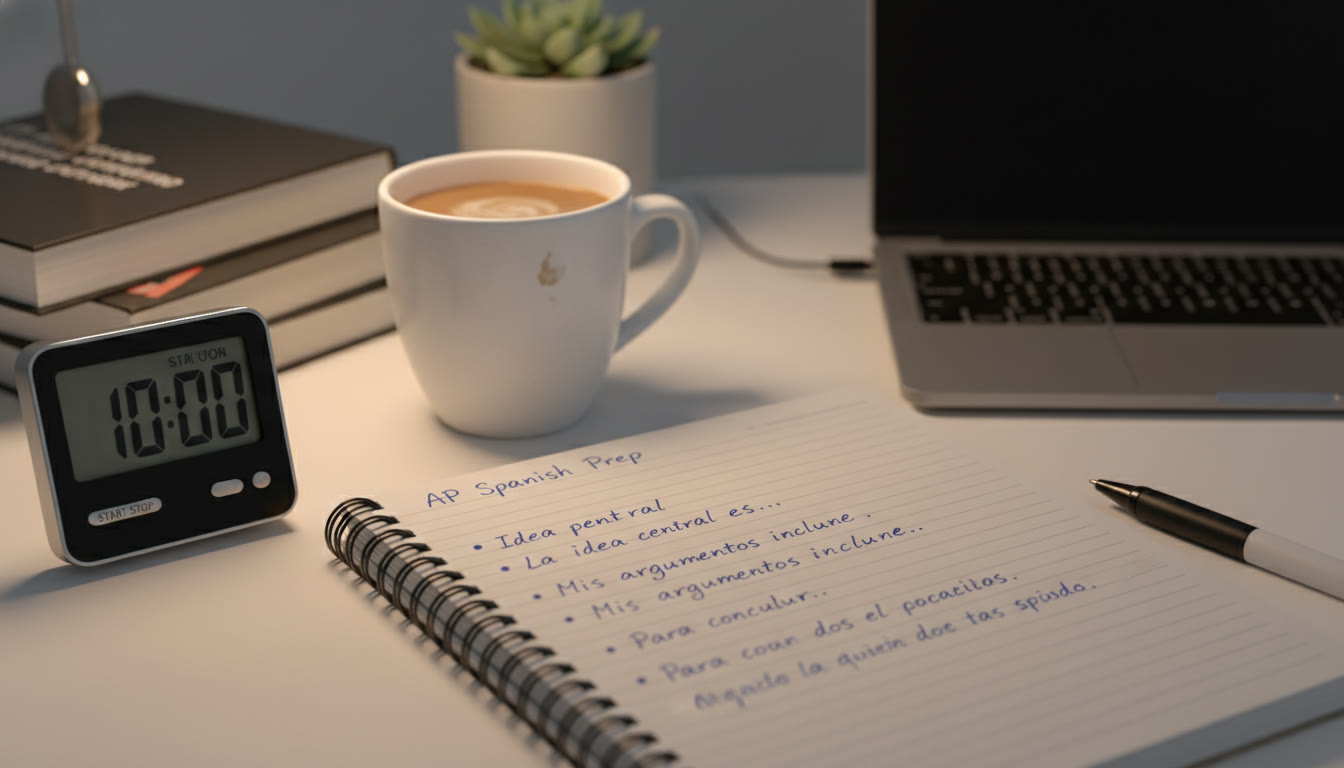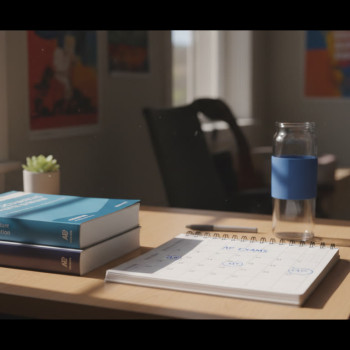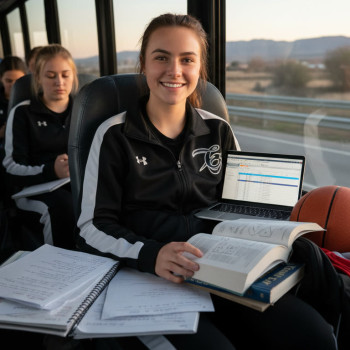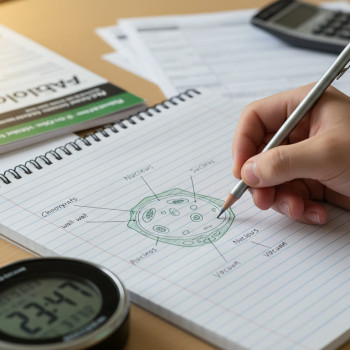Why email replies matter in AP Spanish and how to score higher
When you sit the AP Spanish Language and Culture exam, the persuasive and interpersonal writing tasks are moments to shine. One of the most common question types asks you to write an email reply—concise, culturally aware, and grammatically precise. If you treat this task like a formula and combine that with genuine voice, you’ll maximize clarity and impress readers who grade for task completion, language use, and cultural awareness.
This post gives you a ready-to-use, high-scoring email reply template, fresh phrasing you can adapt, strategic grading tips, and practice examples to internalize the pattern. The goal: make the exam prompt feel less like a surprise and more like a familiar conversation where you can show off accuracy, style, and Spanish fluency.
What graders are looking for (in plain terms)
Before we hand you the template, let’s translate grader-speak into student-friendly goals. When exam readers evaluate your email reply, they focus on three big areas:
- Task fulfillment: Did you answer everything the prompt asked? Were all the bullet points or questions covered clearly?
- Communication and cultural relevance: Is the text appropriate for the audience and situation? Does it show awareness of Spanish-speaking norms where relevant?
- Language control: Is your grammar, vocabulary, and sentence variety solid? Are errors minor and infrequent?
Hit all three and you’ll be on track for a high score. The template below helps you meet all three efficiently while keeping your voice natural.
A practical, high-scoring email-reply template (adaptable)
Use this structure as your backbone during the exam. It’s brief enough to be manageable in the time limit and flexible for different prompts.
Template: Spanish Email Reply
Opening (salutation, acknowledgment, and purpose):
Estimado/a [Nombre],
Muchas gracias por tu correo. Me alegra que me hayas escrito / Gracias por avisarme / Gracias por la invitación. En respuesta a tu mensaje, quisiera…
Body paragraph 1 (answer first bullet / main question, include specific details):
En cuanto a [tema 1], creo que / pienso que / me parece que… Además, (motivo/razón) / (ejemplo concreto) / Por ejemplo, …
Body paragraph 2 (answer second bullet / provide alternatives or suggestions):
Respecto a [tema 2], una opción sería… Otra posibilidad es… Si te parece bien, podría… También es importante mencionar que…
Body paragraph 3 (answer third bullet / express preference and cultural note if relevant):
Personalmente prefiero… porque… Cabe destacar que en [país o contexto hispanohablante] es habitual / no es habitual …
Closing (summary, call to action, polite farewell):
En resumen, estoy de acuerdo con… / Te confirmo que… Avísame si quieres que aclare algo más o si deseas que reserve / confirme / organice…
Un saludo cordial,
[Tu nombre]Key phrases and sentence starters to keep close
Memorizing a handful of flexible connectors and opinion phrases will save time and reduce errors:
- Para empezar / En primer lugar
- En cuanto a… / Respecto a…
- Por otro lado / Además
- Me gustaría sugerir / Propongo que…
- Si te parece bien, puedo… / Si estás de acuerdo, haré…
- En resumen / Para concluir
- Quedo a la espera de tu respuesta / Avísame si necesitas más información
How to adapt the template to common AP prompts
AP prompts usually present a situation and three bullet points you must address. Map each bullet to a short paragraph—one bullet, one paragraph. This keeps your response organized and ensures you won’t miss anything. Below are typical scenarios and how to tailor the template.
Scenario 1: Responding to an invitation (social)
Bullets: accept or refuse, explain reason, suggest alternate plan.
- Paragraph 1: Say yes/no and give a clear reason.
- Paragraph 2: Offer a specific alternative if refusing or making adjustments; give details — day, time, location.
- Paragraph 3: Express enthusiasm and cultural niceties (e.g., using polite formulas common in Spanish-speaking settings).
Scenario 2: Replying to a classmate (academic)
Bullets: summarize availability, propose study strategy, ask clarifying questions.
- Paragraph 1: Confirm dates/times you are available.
- Paragraph 2: Suggest a study plan (topics, roles, resources) using modal verbs (podríamos, deberíamos).
- Paragraph 3: Close by requesting confirmation and offering to prepare materials.
Common grammar traps and how to avoid them
A few recurring grammar pitfalls can cost points if they become frequent. Focused practice will keep them rare.
- Agreement errors: Ensure adjectives and past participles match gender and number (las tareas entregadas, el trabajo terminado).
- Ser vs. Estar: Use ser for identity/essential characteristics (es importante), estar for states/locations (estoy disponible, estamos cansados).
- Por vs. Para: Por often indicates motive or means (por la razón), para indicates purpose or recipient (para la clase, para ti).
- Preterite vs. Imperfect: Use preterite for completed actions (fui, hice) and imperfect for background or repeated actions (era, iba).
- Subjunctive triggers: Learn common phrases: es posible que, espero que, Ojalá que—use subjunctive appropriately to express doubt or wishes.
A sample high-scoring email reply (model answer)
Below is a full example using the template. Read it slowly and notice how each paragraph maps to the imaginary bullets in the prompt.
Prompt (imagined):
You received an email from a Spanish exchange student asking to join your school club for a cultural activity. Address the following: 1) welcome them and confirm participation, 2) explain what they need to bring, 3) suggest a follow-up meeting.
Model Reply
Estimado Javier,
Muchas gracias por ponerte en contacto. Nos encantaría que te unieras a nuestro club y confirmo que puedes participar en la actividad cultural del próximo sábado.
En cuanto al material, trae por favor una copia de tu pasaporte o identificación de estudiante y ropa cómoda para las dinámicas. Además, si quieres preparar una presentación breve (3–5 minutos) sobre una tradición de tu país, sería maravilloso; ayuda a que todos aprendamos.
Respecto a una reunión previa, podríamos vernos el jueves a las cuatro de la tarde en la sala 12 para organizar las presentaciones y repartir roles. Si ese horario no te conviene, dime qué te va mejor y buscaremos otra opción.
En resumen, todo está listo para recibirte el sábado. Quedo a la espera de tu confirmación y de la presentación, si decides hacerla. ¡Bienvenido al club!
Un saludo cordial,
María García
Table: Quick scaffolding to plan your email in 6 minutes
| Minute | Task | Example prompt section |
|---|---|---|
| 0–1 | Read prompt carefully; identify the audience and three required tasks | Confirm participation; list items; propose meeting |
| 1–2 | Write salutation and opening sentence (acknowledge and state purpose) | Estimado…, Gracias por tu mensaje… |
| 2–4 | Write three short paragraphs—one for each bullet (2–3 sentences each) | Answer, give specifics, include a cultural note if relevant |
| 4–5 | Write closing sentences and signature; ensure call to action | Quedo a la espera…, Un saludo, |
| 5–6 | Quick proofread for agreement, tense, and register | Check ser/estar, por/para, and subjunctive triggers |
Practice tasks to make this template automatic
Practice under timed conditions. Here are five short prompts to try in 10 minutes each. Time yourself; use the scaffold table above.
- A classmate invites you to a group project meeting but suggests a time you cannot attend. Respond, propose another time, and say what you will prepare.
- A host family asks whether you have dietary restrictions for a three-week stay. Respond, explain your needs, and suggest possible alternatives.
- Your teacher asks you to confirm attendance at an online review session and to state two topics you want covered. Reply and suggest a question for the teacher to address.
- A friend invites you to join a cultural festival performance. Explain why you will/won’t attend, suggest an alternate role (e.g., helping backstage), and describe one costume item you could lend.
- An exchange student requests recommendations for local transportation and a place to eat. Give two transport options, recommend one restaurant, and ask if they have dietary preferences.
How to sound natural and culturally aware
Authenticity helps your score. Short cultural notes added to the email show awareness beyond grammar. For example, when replying to an invitation, use phrases like “sería un placer” or “nos encantaría” instead of overly literal translations. If the context involves formal institutions (teachers, clubs), choose “Estimado/a” or “Saludos cordiales”. For peers, “Hola” or “Un abrazo” (if appropriate) works better. These small choices demonstrate register control—exactly what exam readers appreciate.

Polishing strategies: editing fast and well
Use these micro-edits during your last minute:
- Scan for subject-verb agreement and adjective agreement.
- Check one tricky pair (ser/estar or por/para) depending on your email content.
- Replace one or two repeated words with synonyms to show lexical variety (e.g., instead of repeating “importante” use “fundamental” or “esencial”).
- Ensure the closing matches the tone (formal vs. informal).
How Sparkl’s personalized tutoring can help (where it fits naturally)
If you want to accelerate progress, working with a tutor helps convert these strategies into habits. Sparkl’s personalized tutoring offers 1-on-1 guidance, tailored study plans, and expert tutors who can give targeted feedback on your practice emails. Tutors often use AI-driven insights to pinpoint recurring errors and suggest focused drills—especially useful for mastering tense contrast, subtleties of register, and culturally appropriate phrasing. A few sessions can make the template second nature so you can write with confidence under timed conditions.
Common mistakes students make under pressure
Understanding common slip-ups helps you avoid them:
- Trying to write long, perfect paragraphs instead of concise, accurate ones. Quality over quantity wins.
- Using overly literal translations from English that produce unnatural Spanish.
- Forgoing a quick plan—many errors arise simply because students forget to answer all bullet points.
- Neglecting cultural nuance—an otherwise correct answer can lose points if the register clashes with the situation.
Wrap-up: practice plan for the last 30 days before the exam
If you have a month to sharpen your email replies, here’s a practical rhythm:
- Week 1: Learn and internalize the template. Practice 3 short emails in 10-minute sessions. Focus on mapping bullets to paragraphs.
- Week 2: Build phrase banks. Memorize 20 transitional phrases and 10 polite closings. Do daily micro-drills (5 minutes).
- Week 3: Simulated timed practice. Complete 6 full prompts under exam conditions and self-grade with the table scaffold.
- Week 4: Targeted tutoring and final polish. Use a tutor (or peer review) to get feedback on recurring mistakes. Run daily quick edits and one full mock exam.
Consistency beats cramming. Even 15 focused minutes a day using this template will produce clear improvements.

Final checklist before you submit your email on the exam
- Did I address every bullet? (YES / NO)
- Is my tone appropriate for the audience? (Formal / Informal)
- Do I have at least one culturally relevant sentence if the prompt allows? (e.g., mention a custom, greeting, or social norm)
- Did I include a call to action or next step (confirm, ask, offer)?
- Quick grammar scan: agreement, ser/estar, por/para, tense consistency, and one subjunctive check if necessary.
Closing thoughts
Writing a winning AP Spanish email reply is less about memorizing long texts and more about mastering a clean, adaptable structure, recognizing tone, and using precise language. Make the template yours: tweak the phrasing, practice until it’s fast, and learn to add one cultural detail that shows depth. Small, consistent improvements lead to reliable scores.
If you’d like tailored feedback, consider brief 1-on-1 sessions to identify weak spots—Sparkl’s personalized tutoring is a great fit for that last-mile polish. Above all, write with clarity, answer every part of the prompt, and let your authentic Spanish voice come through.
¡Buena suerte! ¡Tú puedes!



















No Comments
Leave a comment Cancel